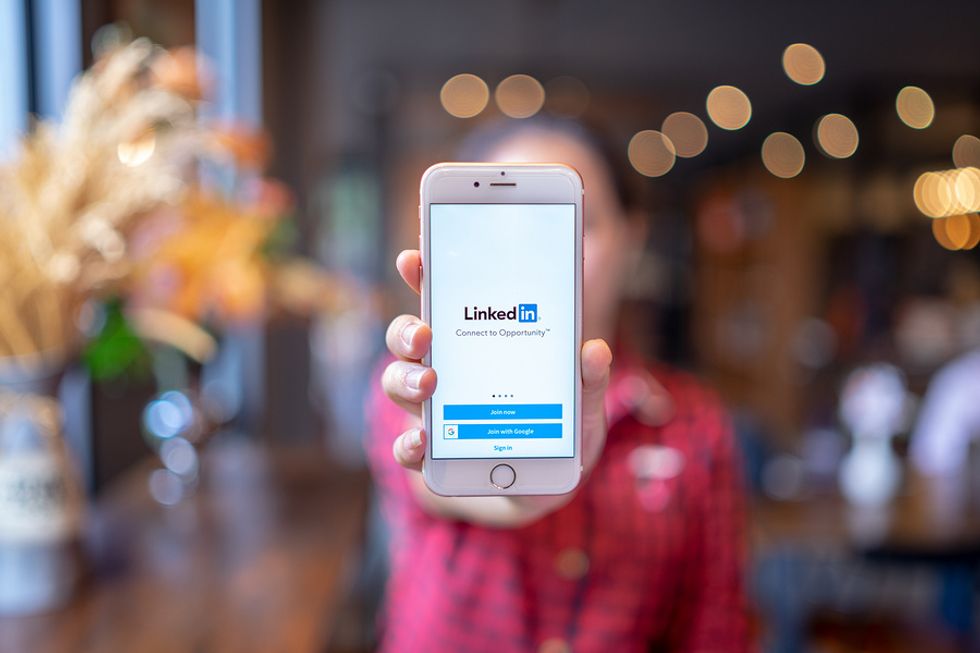The job search process is always evolving. It’s not about going to the job boards, finding the job opening you like, and then applying for it. That method will only have you waiting by the phone for a call, which is likely not going to happen. Today’s job seekers need to take a more proactive and interactive approach called “backchanneling” (a type of professional networking), and LinkedIn is a resource to help you do that. That’s why you need an optimized LinkedIn profile for job search success.
Creating a strong LinkedIn profile will help you get in front of the right contacts (recruiters, hiring managers, professionals in the field, etc.) who can lead you to your next job opportunity. However, in order for that to happen, you need a LinkedIn profile that communicates and displays the right information.
Your profile should be keyword-optimized, visually appealing, and aligned with your personal brand. Think of it as your digital first impression—one that needs to be clear, compelling, and easy to find in LinkedIn search results.
Take a look at the LinkedIn profile checklist below to learn how to optimize and use your LinkedIn profile effectively.
The Basics Of An Effective LinkedIn Profile

Bigstock
1. Make Sure You Have An Appropriate Headline
The headline is what shows up for your LinkedIn profile when it comes up in search results. It’s also what shows up when others look at you through their contacts’ connections. By default, your LinkedIn headline reads your current job title and employer, but if you want to grab the attention of others, it should say more than that. Think about keywords and highlighting your greatest skill sets, each separated by a vertical line.
2. Display Professionalism In Your Profile Photo
A LinkedIn profile that includes a headshot photo is more likely to be clicked on than a profile without a photo. In selecting your profile photo, go with a headshot that makes you look professional and approachable.
3. Personalize Your LinkedIn URL
Whether you choose to include your LinkedIn profile on your resume or in your email signature, personalize the URL. It’ll come off as more professional and memorable. Examples:
- linkedin.com/yourname
- linkedin.com/yourname-professionalkeyword
The Important Details In An Effective LinkedIn Profile

Bigstock
1. Offer Your Value Statement In The “About” (Summary) Section
The “About” section on your LinkedIn profile should summarize what you have to offer and how that translates to value for the potential employer. This is where you’ll include your personal branding statement. This section should also contain a list of your key skill sets. Never write in the third person on your LinkedIn profile unless you want to come off as pretentious.
2. Make Your Work Experience Keyword-Rich
In your “Experience” section on your LinkedIn profile, use bullet points to highlight accomplishments and quantify your work experience. Think about relevant keywords to include naturally in your writing. The more keyword-rich your profile is, the more likely it’ll show up in search results. It’s also important to make sure the information you include in your “Experience” section on your LinkedIn profile matches the information in the “Work History” section on your resume, so you don’t confuse recruiters and hiring managers.
3. Get Endorsed For The Right Skills And Expertise
Review the “Skills and Expertise” section to prioritize what’s important. When you do that, your contacts are more likely to endorse you for the right skills, which in turn shows recruiters and hiring managers you have what they are looking for. What you want to avoid is including skills and expertise that don’t relate to the jobs you’re applying for or your profession. That will simply dilute your overall message, including your personal brand.
Additional Steps For Creating An Effective LinkedIn Profile
1. Don’t Let Your Education Give Away Your Age
Your education, which can include specialized training and certifications, adds value to your qualifications. When listing the information, take caution with dates. It’s not necessary to indicate when you received your degree from college—that can give away your age in some cases. Also, don’t include anything that may be too dated. You want to show you hold current, relevant skills that are valuable to the profession, not irrelevant expertise.
2. Join Relevant Groups
LinkedIn offers a diverse selection of Groups that you can (and should) join—professional associations, industry groups, alumni groups, etc. If they’re relevant to your profession or skills needed for the job, share their badge on your profile. It helps hiring managers and recruiters see that you’re connected and active in networks that are important. You can also benefit by taking things a step further with LinkedIn Groups, like participating in discussions and sharing interesting articles to get your name out there. Many hiring managers and recruiters will look at discussions in relevant groups to pull out potential candidates for job openings they have available.
3. Make Your Profile Public
LinkedIn profiles that are made public allow others to view your information, whether you’re connected with them or not. This option is best when you’re a job seeker.
Every professional—not just job seekers—should learn how to optimize their LinkedIn profile. A well-crafted LinkedIn profile increases your visibility to recruiters, builds your personal brand, and opens doors to new networking opportunities. Follow the steps above to build a strong LinkedIn profile today for job search and career success!
Need more help with your job search?
Get access to our Free Resource Center today (no credit card required!).
From Your Site Articles
Related Articles Around the Web